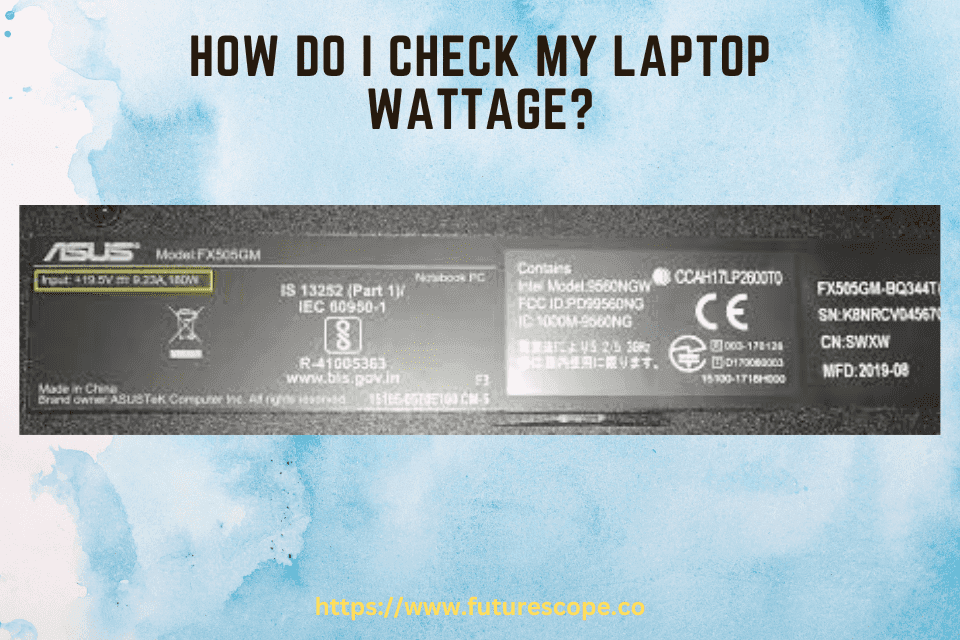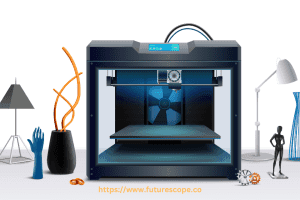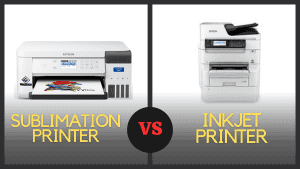What We Have Covered in This Article
Last Updated on September 9, 2023 by Editor Futurescope
To check the wattage of your laptop, right-click the taskbar and select Task Manager. Then, click the Processes tab and look for columns labeled “Power usage” and “Power usage trend.”
Alternatively, you can check the label on your laptop’s charging port for information about voltage and amps, and multiply these values to calculate the wattage. Another option is to contact the manufacturer directly for the wattage specifications. A watt meter, also known as a power meter, is an easy and accurate way to measure your laptop’s energy consumption in real-time.
Simply plug the watt meter into a wall socket and connect your laptop or power strip to it. By following these methods, you can easily determine the wattage of your laptop.
Why Measuring Laptop Wattage Is Important?
Measuring laptop wattage is crucial for understanding the power consumption of your device. To check your laptop wattage, you can refer to the power adaptor’s specifications or contact the manufacturer for accurate information. This helps in efficiently managing power usage and avoiding potential issues related to overloading the laptop’s power supply.
Understanding The Power Requirements Of Your Laptop:
Your laptop’s wattage refers to the amount of power it consumes during operation. Knowing your laptop’s wattage is essential for several reasons, including:
- Determining the appropriate power supply or charger for your laptop.
- Estimating the battery life and usage time of your laptop.
- Ensuring that your laptop is compatible with power sources in different regions or countries.
- Preventing overloading or damaging your laptop by using incompatible power sources.
Identifying Power-Hungry Components
Different components of your laptop consume varying amounts of power. It’s important to identify these power-hungry components to understand your laptop’s overall wattage usage. Here are some key components to consider
- CPU (Central Processing Unit): The CPU is the primary component responsible for executing computer programs. It can consume a significant amount of power depending on its processing capabilities.
- GPU (Graphics Processing Unit): If you use your laptop for gaming or graphic-intensive tasks, the GPU may be one of the most power-hungry components.
- Display: Larger and high-resolution displays generally require more power to operate.
- Hard Drive or Solid-State Drive: Storage drives, especially mechanical hard drives, can consume power during read and write operations.
- Memory (RAM): While RAM doesn’t consume much power compared to other components, it’s still worth considering when calculating overall wattage.
Understanding the power requirements of your laptop and identifying power-hungry components can help you make informed decisions about power management, choosing the right charger, and optimizing battery life.
Method 1: Check Manufacturer’S Specifications
To check your laptop wattage, start by checking the manufacturer’s specifications. Look for information on power consumption or wattage in the documentation or on the manufacturer’s website.
To find out the wattage of your laptop, you can start by checking the manufacturer’s specifications. Here’s how you can do it:
Locating The Laptop’s Model Number:
- Look for a sticker on the bottom of your laptop that displays the model number.
- The model number may also be located on the back of the laptop or on the side.
Visiting The Manufacturer’s Website:
- Go to the manufacturer’s website using your preferred web browser.
- Look for a search bar or a support section where you can search for your specific laptop model.
Finding The Laptop’s Wattage Information:
- Once you have found your laptop model on the manufacturer’s website, navigate to the product page or support page for that model.
- Look for the specifications section or a tab that provides detailed information about your laptop.
- Check for any information related to power consumption, wattage, or power supply requirements.
Remember, the wattage information may vary depending on the specific model and configuration of your laptop. It’s essential to check the manufacturer’s specifications to get the accurate wattage information for your device.
By following these steps, you will be able to find the wattage information for your laptop through the manufacturer’s specifications.
Method 2: Using Power Metering Tools
To check your laptop’s wattage, you can use power metering tools like a watt meter. Simply plug the watt meter into a wall socket and then plug your laptop or a power strip with your laptop into it to measure its energy consumption in real-time.
Power metering tools are software applications that enable you to monitor and track the wattage of your laptop in real-time. By using power metering tools, you can gain valuable insights into your laptop’s power consumption and make adjustments to optimize its efficiency.
Here’s how you can use power metering tools to check your laptop wattage:
Downloading and installing power metering software:
- Search for reputable power metering software online.
- Visit the software’s official website and navigate to the downloads section. Choose the appropriate version of the software for your operating system (Windows, Mac, Linux, etc. ).
- Click on the download link and follow the on-screen instructions to install the software on your laptop.
Monitoring laptop wattage in real-time:
- Launch the installed power metering software on your laptop.
- Once the software is running, it will start displaying real-time data about your laptop’s wattage.
- Look for a dedicated section or tab in the software that showcases the wattage information.
- Monitor the wattage readings displayed on the screen and note any fluctuations or patterns.
Using power metering tools is a convenient and effective way to keep track of your laptop’s wattage. Monitoring the power consumption can help you identify energy-intensive tasks or applications that are draining the battery quickly. By understanding the power usage of your laptop, you can make informed decisions to extend its battery life and optimize its performance.
Remember to regularly check the software’s website for updates and new features to ensure you are using the latest version of the power metering tool. With the ability to monitor your laptop’s wattage in real-time, you can take control of its power consumption and enhance your overall computing experience.
Method 3: Using A Multimeter
This method involves using a multimeter to measure the voltage of your laptop’s power supply. Simply connect the multimeter to the power supply and read the voltage to determine the wattage of your laptop.
If you want to accurately measure the wattage of your laptop, you can use a multimeter. A multimeter is a versatile tool with various functions, including measuring voltage, current, and resistance. Here’s how you can use a multimeter to check your laptop’s wattage:
Measuring laptop wattage using a multimeter
- Start by turning off your laptop and unplugging it from the power source.
- Set your multimeter to the voltage measurement mode (V).
- Connect the black probe to the negative terminal of the laptop’s power adapter or battery.
- Connect the red probe to the positive terminal.
- Turn on your laptop and observe the multimeter reading.
- The reading on the multimeter represents the voltage supplied by the power adapter or battery.
- To calculate the wattage, multiply the voltage reading by the current draw (in amps).
- If you don’t know the current draw, you can estimate it by dividing the wattage rating of your laptop by the voltage reading.
Using a multimeter is a reliable method to check the wattage of your laptop. It allows you to measure the voltage supplied by the power adapter or battery, which is essential for determining the laptop’s wattage. Make sure to follow the instructions carefully and take necessary safety precautions when working with electricity.
Tips For Accurate Wattage Measurement
To check the wattage of your laptop, you can use a watt meter or power meter to measure how much energy your laptop and its peripherals are consuming in real-time. Simply plug the watt meter into a wall socket, and then plug your laptop or power strip directly into it to get an accurate measurement.
Connecting The Laptop To The Power Source:
When it comes to checking your laptop wattage, the first step is to connect it to the power source properly. Here are some tips to ensure a reliable connection:
- Use the original charger: Always use the charger that came with your laptop or a compatible one from the manufacturer. Using a different charger may provide inaccurate readings.
- Connect directly: Plug your laptop directly into a wall outlet or power strip. Avoid using extension cords or power adapters, as they can interfere with the power supply.
- Secure the connection: Ensure that the charging cable is firmly plugged into both the laptop and the power source. A loose connection can lead to inconsistent wattage readings.
Ensuring Optimal Battery Conditions
To get accurate wattage measurements, it’s important to ensure that your laptop’s battery is in optimal condition. Follow these tips:
- Fully charge the battery: Before checking the wattage, make sure your laptop’s battery is fully charged. This will provide a baseline for measuring power consumption.
- Avoid power-saving modes: Disable any power-saving modes or battery optimization settings on your laptop. These modes can alter the power consumption and affect the accuracy of the measurements.
- Keep the battery cool: Overheating can impact the performance and lifespan of your laptop’s battery. Ensure proper ventilation and avoid using your laptop on soft surfaces that can obstruct airflow.
Taking Multiple Measurements For Accuracy
To obtain accurate wattage measurements, it’s recommended to take multiple readings. Here’s why:
- Eliminate outliers: Taking multiple measurements helps identify any anomalies or fluctuations in power consumption. A single measurement may not reflect the actual wattage accurately.
- Calculate an average: By taking multiple readings, you can calculate an average wattage value. This provides a more reliable estimate of your laptop’s power consumption.
- Testing under different conditions: Perform wattage measurements while running different tasks and applications on your laptop. This allows you to understand how power consumption varies in different usage scenarios.
Remember, accurate wattage measurement is essential for understanding your laptop’s power usage and optimizing its performance. By following these tips, you can ensure reliable and consistent measurements.
Understanding Laptop Power Consumption
To check your laptop wattage, you can use a watt meter or power meter to measure the energy consumption in real-time. Simply plug the watt meter into a wall socket and connect your laptop or a power strip with all your devices to it.
This provides a simple and effective way to monitor power consumption.
Laptop power consumption refers to the amount of power your laptop uses to operate. Understanding how to check your laptop’s wattage can help you optimize its power settings and identify power-hungry applications and processes. By doing so, you can improve its efficiency and prolong your battery life.
Let’s explore the factors affecting laptop power consumption, how to optimize power settings for better efficiency, and how to identify power-hungry applications and processes.
Factors Affecting Laptop Power Consumption
- Hardware Components: The power consumption of your laptop depends on its hardware components, such as the processor, graphics card, and display. More powerful components typically consume more power.
- Workload: The tasks you perform on your laptop can significantly impact its power consumption. Resource-intensive activities like gaming or video editing will consume more power than basic web browsing or word processing.
- Power Settings: Your laptop’s power settings can also affect its power consumption. Adjusting settings such as screen brightness, sleep mode, and power plans can help optimize power usage.
- External Peripherals: Connected devices like USB devices, external hard drives, and peripherals can contribute to power consumption, especially if they are constantly active.
Optimizing Power Settings For Better Efficiency:
- Adjust Power Plans: By selecting an appropriate power plan, such as “Power Saver” or “Balanced” mode, you can optimize your laptop’s power consumption based on your needs. Power Saver mode prioritizes energy efficiency, while Balanced mode offers a balance between performance and power saving.
- Control Screen Brightness: Dimming your screen brightness can significantly reduce power consumption. Lowering the brightness to a comfortable level conserves battery life and reduces power usage.
- Enable Sleep Mode: Configuring your laptop to enter sleep mode after a certain period of inactivity helps minimize power consumption. Sleep mode suspends most system activities and conserves energy.
- Manage Background Apps: Closing unnecessary or power-hungry applications running in the background can help reduce power consumption. Check your task manager and close any programs that you don’t need.
Identifying Power-Hungry Applications And Processes
- Task Manager: Accessing the Task Manager on your Windows laptop allows you to monitor power usage for different applications and processes. Look for columns labeled “Power usage” and “Power usage trend” to identify which applications are consuming the most power.
- Activity Monitor: Mac users can utilize the Activity Monitor utility to identify power-hungry applications and processes. It provides detailed information about resource usage, including energy impact.
- Battery Health Tools: Some laptops offer built-in battery health tools that provide insights into power consumption. These tools can help you identify applications or processes that are draining your battery quickly.
Remember, understanding and managing your laptop’s power consumption can result in better efficiency and improved battery life. By considering the factors affecting power consumption, optimizing power settings, and identifying power-hungry applications and processes, you can ensure your laptop operates at its best while conserving energy.
Frequently Asked Questions Of How Do I Check My Laptop Wattage?
How Do I Check My Computer’s Wattage Windows 10?
To check your computer’s wattage on Windows 10, right-click the taskbar and select “Task Manager” or press the Windows key, type “task manager,” and hit Enter. In the Processes tab, you’ll find columns labeled “Power usage” and “Power usage trend. “
How Can I Check The Wattage Of My Laptop?
To check the wattage of your laptop, you can look at the power adapter or charger that came with your laptop. It should have the wattage information listed on it. Another option is to contact the manufacturer directly and ask for the wattage specifications of your laptop model.
Why Is It Important To Know The Wattage Of My Laptop?
Knowing the wattage of your laptop is important for several reasons. Firstly, it helps you determine the power requirements of your laptop, which is crucial when choosing compatible accessories or determining if your power supply is sufficient. Additionally, knowing the wattage can help you better manage your laptop’s power consumption and battery life.
Can I Check The Wattage Of My Laptop Using Software?
No, you cannot check the wattage of your laptop using software alone. The wattage of your laptop is a hardware specification that is determined by the power adapter or charger. Software can only provide information on power usage or battery capacity, but not the actual wattage of your laptop.
Conclusion
To check your laptop wattage, there are a few methods you can use. First, you can check the power usage in the Task Manager if you’re using a Windows PC. Simply right-click the taskbar and choose Task Manager, then click on the Processes tab to view the “Power usage” and “Power usage trend” columns.
Another option is to use a watt meter, also known as a power meter, which plugs into a wall socket and measures your PC’s energy consumption in real-time. It’s a straightforward way to get an accurate reading of your laptop’s wattage.
Additionally, you can contact the manufacturer directly or look at the power adapter’s tech specifications to find the power consumption information. By following these methods, you can easily check your laptop’s wattage and make informed decisions about its power usage.




